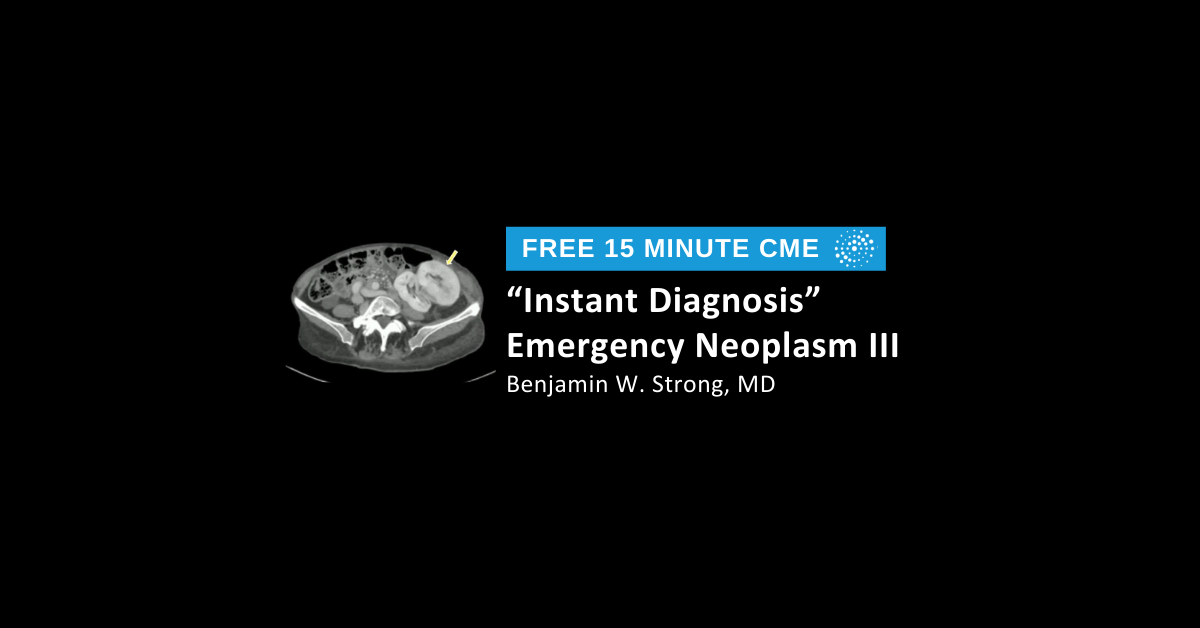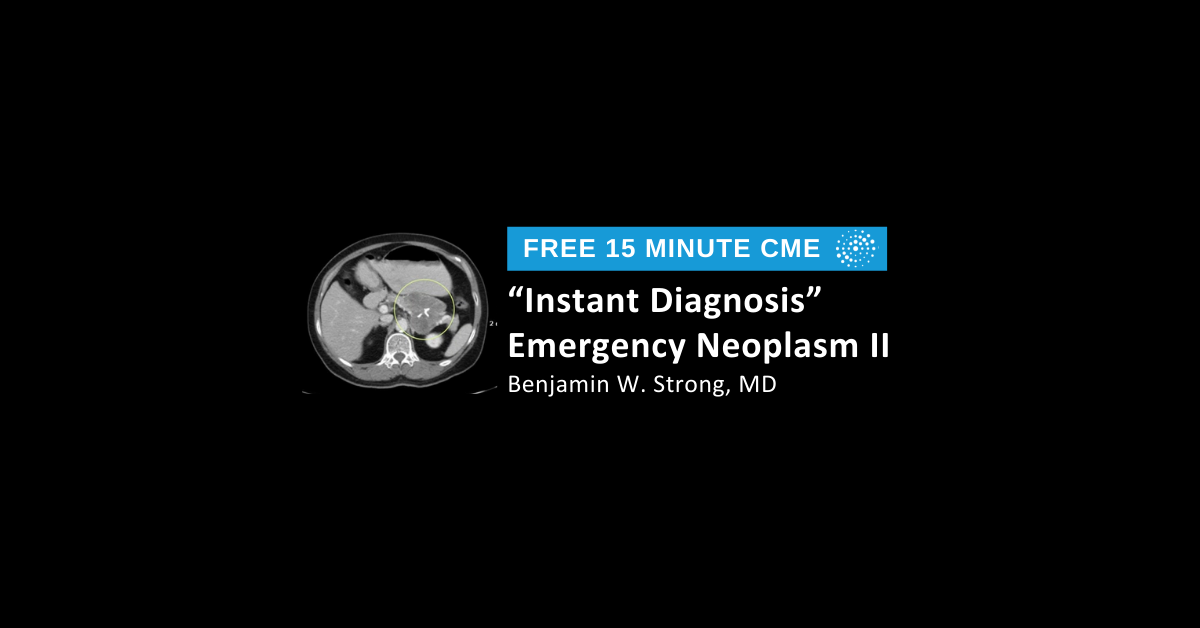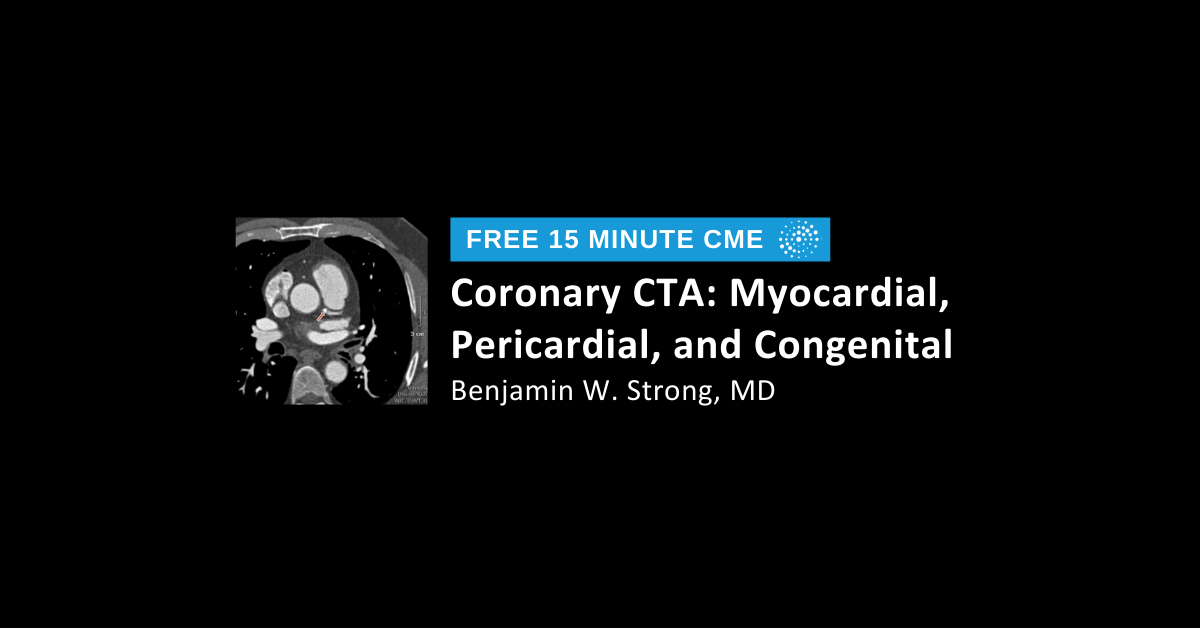
“Instant Diagnosis” Emergency Neoplasm Presentations III
0.25 AMA PRA Category 1 Credit™
Cost: Free
Expires: 12/31/2025
Course Overview
15-minute radiology education through the presentation of radiographs and CT scans of established pathologies, with annotated video color-coded and synchronized with lists of findings and unifying diagnoses.
Learning Objectives
- Learn a number of abdominal neoplasms that have diagnostic CT characteristics.
- Recognize the CT findings that suggest the specific diagnosis of certain abdominal neoplasms.
- Understand the role of CT in the emergency diagnosis of abdominal neoplasms.










.jpg?width=1024&height=576&name=vRad-High-Quality-Patient-Care-1024x576%20(1).jpg)







%20(2).jpg?width=1008&height=755&name=Copy%20of%20Mega%20Nav%20Images%202025%20(1008%20x%20755%20px)%20(2).jpg)







.png?width=1200&height=628&name=Copy%20of%20Copy%20of%20Copy%20of%202022_CME_Header_1200x628%20(1).png)
.png?width=1200&height=628&name=Copy%20of%20Copy%20of%202022_CME_Header_1200x628%20(2).png)


-1.png?width=1200&height=628&name=Copy%20of%202022_CME_Header_1200x628%20(4)-1.png)